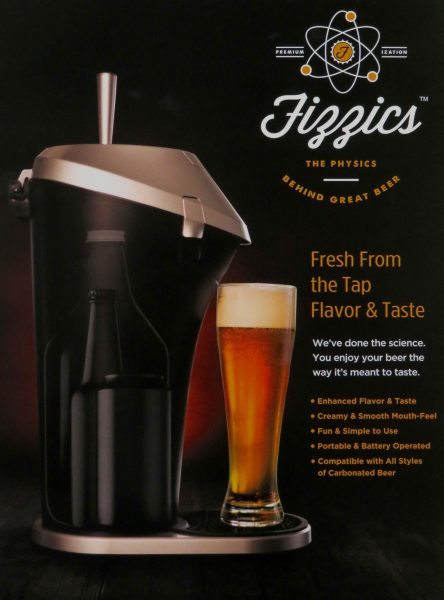
Not so long ago a group of friends and I were discussing how a vacation property we were staying at didn’t have an wine aerator. One friend took a jab at another and jokingly said, “that wouldn’t help the cheap hooch you drink anyway!” We all laughed and went on to talk of other things, but it got me thinking that an aerator is such a simple way to improve the bouquet and flavor of wine. Conversely, expensive kegerators with complex piping and specialty gas consumables are required to get that sought-after draught taste and mouthfeel (my new favorite word) in beer. Fast-forward a few months and I saw a video of Fizzics at CES 2016 and though it was exactly what I was looking for. Imaging my surprise when a few weeks ago Julie was able to obtain a unit for review. I’ve been working hard at this review (i.e. drinking heavily) for a few weeks now. Read on to see what I think!
What’s in the Box?
The Fizzics unit comes with a quick start card (I’ve included a scan of this below), a user manual and the unit. Minimal assembly is required: the tap lever must be pushed onto the activation switch on top and the base must be aligned with tabs on the bottom of the canister and twisted into position. Additionally, 4 AA batteries must be installed into the compartment within the top. Completing all of these steps should take no more than a couple of minutes, tops. When it is fully assembled the unit is about 11 3/4″ wide, 17 3/4″ tall, and 7″ deep. The manual recommends an additional 8″ on each side and 10″ in front for usability. You will also need about another 6″ above to swing open and close the lid and to optionally remove the lid. Fortunately, since the empty unit weighs less than 5 lbs., it can be stored under cabinets and brought out when in use.
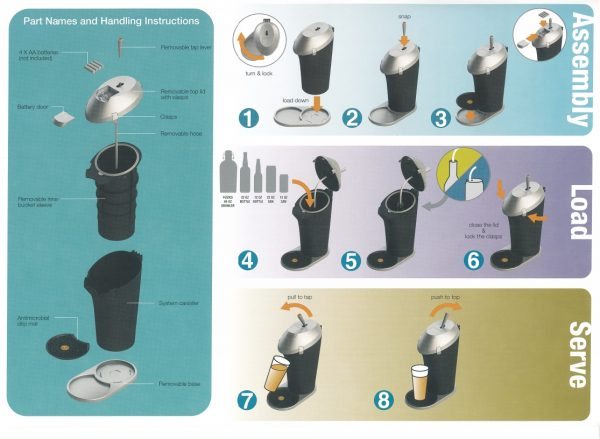
Once assembled, it is an attractive appliance. The black canister and gold accent top has a modern aesthetic that would also be at home in a contemporary, traditional or even old world environment. So now that I’ve got this put together I’m prepared to take it apart and see what makes it tick. But first…
The physics behind Fizzics
Most systems used to dispense beer employ air, Nitrogen gas (N2), Carbon Dioxide (CO2), or a combination of these gases to pressurize the beer in a container through a hose and out of the tap. Once the beer leaves the tap it is suddenly at a lower pressure than it was in the container or piping. Gasses that were trapped within the fluid under pressure escape from the fluid by forming bubbles. The bubbles create a beer’s head when the gas bubbles are trapped by proteins left over by the yeast, grain and hops. The kegerator systems use similar gases to those used in bars to replicate the type of head that you get from a draught at a bar. Why different gases? Well, the CO2 that remains in the beer gives it a soda-like quality whereas the CO2 that escapes forms the head. Nitrogen doesn’t stay in solution; it just makes the head creamier than CO2 can by itself. The reason has to do with the fact that Nitrogen gas makes smaller bubbles than CO2. Some canned beers (i.e. Guinness) add a splash of liquid Nitrogen to the beer before sealing the can so that Nitrogen gas bubbles will form once the can is opened.
The fizzer inside Fizzics
The Fizzics unit creates small bubbles, without adding any gases, by using a sonicator and subjecting the stream of beer to a specific frequency and amplitude of ultrasonic sound. The acoustic energy produced by the sonicator causes microscopic bubbles to grow in a similar fashion to the way that shaking a bottle of beer causes it to overflow. I disassembled the top cover to reveal the inner workings and to evaluate the cleanability of the design. I don’t recommend you tear-down your own unit. Overall the system works in the manner below:
- Pulling forward on the handle causes an electrical switch to close which starts an air pump to pressurize the inner bucket. The increased pressure forces liquid in the installed container to flow up the silicone tube and out of the spout at the front of the unit. The beer flows out in a steady stream without much foam. This helps the beer from going flat.
- Allowing the tap handle to return to the center position causes the inner bucket to vent. When you release the tap handle and it returns to the center a brief whistle can be heard as air rushes out of the vent hole, pictured below, towards the center of the lid. (The hole to the left is the port through which the air pump pressurizes the interior.
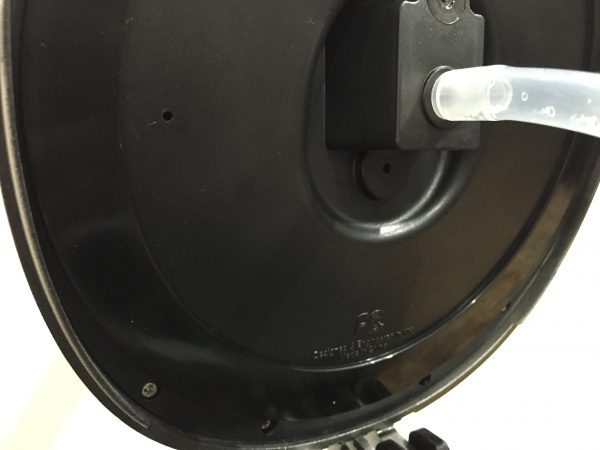
- Pushing the tap handle forward causes the air pump to operate at a different speed and energizes the sonicator to add energy to the beer as its passing by. Consequently, the beer emerges from the nozzle with ample head. I have indicated the position of the sonicator in the photo below:
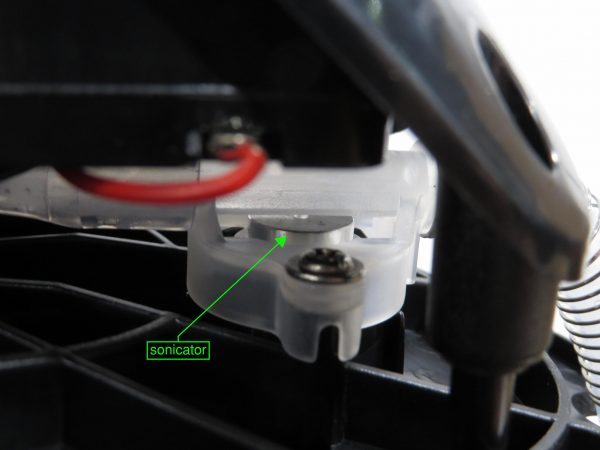
The movie below shows the unit operating in both modes. First the tap is pulled and clear beer flows from the nozzle on the right. Then the pressure is released and the tap is pushed. The sonicator can be seen adding bubbles to the stream as it flows by.
As I mentioned above, I opened the unit to demonstrate it’s operating principle and to also evaluate its cleanability. The manufacturer recommends that warm water is sufficient to clean out the machine after each use. The flow from the inside tube through the spout is a straight run of tube but there are a few barb fittings that may harbor residues even after flushing with water. One such fitting is below the left-hand side of the red wire in the picture and video above. At a minimum I would recommend more than a pint of water be used – perhaps two or three may produce better results, especially if you allow the system to drain between each pint. During my evaluation, I have also disassembled the hose from the bottom of the lid and washed that in the sink separately from the unit, since the rinse water may not reach all the way up to clean soiled parts on the outside of the hose. The hose is designed to be removable by the user and I recommend performing this step after each use. Improved cleaning may also be achieved by inverting the hose from the bottom of the lid under a flowing faucet stream, while it is still attached to the unit, and allowing the increased flow and water pressure to flush out the line. In addition, I have stored the unit with the lid ajar so that any residual moisture has a chance to dry out. Keeping the lid closed with the residues of a sugary, amino acid rich liquid will probably result in contamination.
Taste Tests
As this isn’t exactly a brand new appliance there are a few reviews scattered around the internet (from cnet, Amazon, and The Beer Connoisseur). They have concluded that the Fizzics improves the taste and texture of most beers. The downside that each of the reviewers have identified is that the Fizzics treatment seems to harmonize beers towards a sweet and malty profile, diminishing the spice and bitterness of pungent hops, and giving the beer a thick and creamy head, even if the normal draught has a thinner less substantial one. Well, if this was a review of fingernails on a chalkboard or root canals, I would probably stop there, but seeing as this is beer I’m going to need to make my own assessment.
I had a bottle of Langunitas IPA in the house and tried that to see how the unit worked. From the bottle, the beer provides a decent head, has a pine-like hops aroma, a citrus/malty taste to it and is a solid beer. The Fizzics seems to turn it up a notch. The difference in the size of the bubbles in the head are observable in the pictures below. The malt characteristics are enhanced perhaps a little more than the hops but everything seems to get a boost. The rich head produced by the Fizzics gives a creaminess to the beer that is unparalleled in a bottle or can except for those that contain N2 widgets.
I also had a bottle of Lagunitas Pils in the house. The beer out of the bottle is a hops-heavy spicy smelling brew with a bitterness that starts off mild, balancing a trailing sweetness, but then increases toward the finish. The Fizzics version definitely had a much sweeter taste and balanced the bitterness during the finish. The treatment that the Fizzics gave the beer didn’t make it bad, but it did make it different.
Now the fun part…I wanted to see how the Fizzics could act on sweetness, maltiness and creaminess on different styles of beer. I started with a Negra Modelo. I think this beer perfectly fits the character of what past reviewers have described the Fizzics as imparting to other beers. Its already a malty, nutty beer with a little bit of vanilla aroma and the potential of a full frothy head. Could Fizzics make this better? Believe it or not, it did! The flavors were more pronounced, the head lingered a little longer on the tongue, and the aroma had more almond and caramel to it.
I wanted to see how the Fizzics deals with complexity. I purchased a bottle of Lindemans Framboise. By the way, the owner’s manual explicitly states that the unit should be used for beer only. Lindemans Framboise is about as close to hard cider as you can get in a beer. It is a lambic style beer that is made from barley, wheat, hops and raspberry juice – there is no yeast added to the mix – the yeast is naturally occurring and particular to the region. The beer has a fruity start and finishes with extremely complex sour and earthy flavors. The Fizzics changed the profile of the beer. It seems that the finish was still there and appreciated, because it is so late and prominent. But the continuity was not the same as drinking from the bottle pour; it seemed like the finish was separated from the main flavors and was a separate aftertaste. Consequently, it wasn’t as enjoyable.
Conclusion
Over the Labor day weekend I brought it out for some family and friends to experiment with and we had a blast with it. We fed a bottle of Budweiser into the unit and Anchor Steam came out of the tap. Just Kidding – this won’t make Budweiser taste like Anchor Steam, although the Fizzics did as much as it could with that Bud and perhaps gave it a little more flavor. I’m obviously at the start of my journey with this system but overall I think that it will accentuate the best of some beers and highlight the sweet and malty characteristics of others. Some beers will not be improved much over their from-the-bottle experience, but that’s OK. Cheers!
Source: The sample for this review was provided by Fizzics. Please visit their site for more info and Amazon to order.

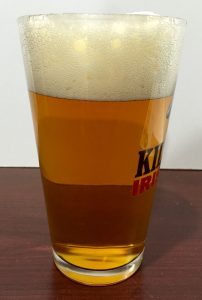
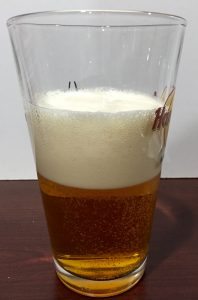
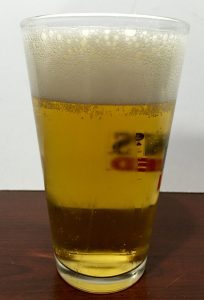

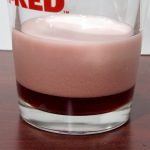
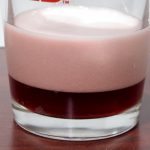


Gadgeteer Comment Policy - Please read before commenting
I bought one of these on the Indigogo campaign almost the day it was launched, one of the best beer related investments I have made, has been well and truly utilized and still going strong nearly a year on, only thing I have needed to replace is the batteries, and I have changed a few :).